Ortho
Produce orthonormal view from oblique projective image
read original image
clear; close all filename = '2002_1229_125739AA.JPG'; img = im2double(rgb2gray(imread(filename))); name = 'check2'; msgid = 'Images:initSize:adjustingMag'; warning('off',msgid); imshow(img);
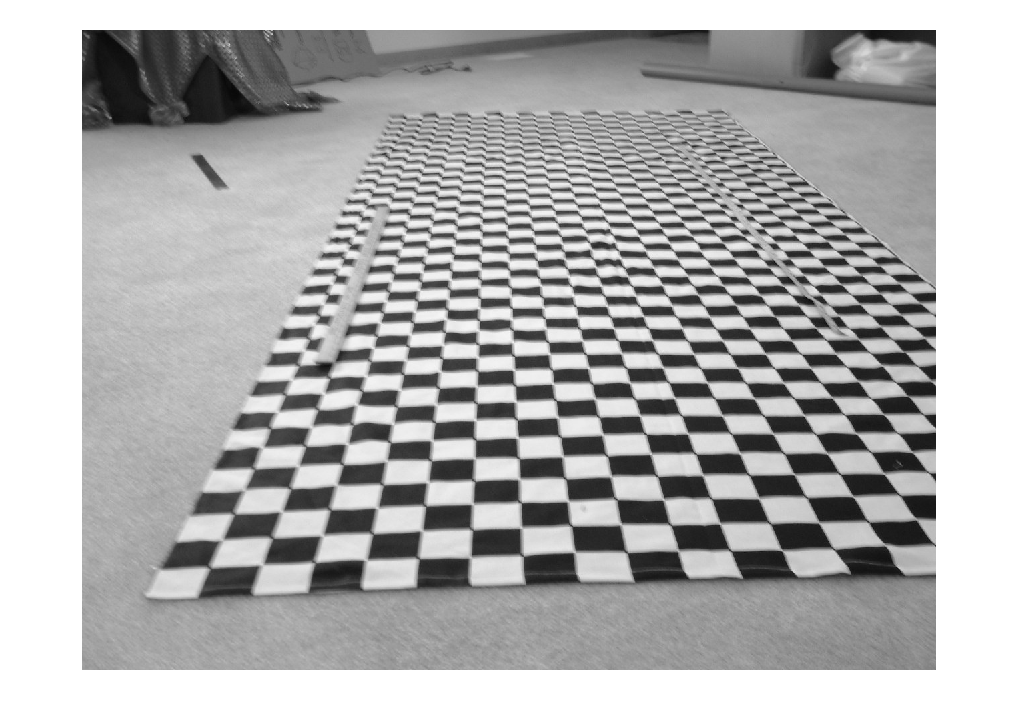
input corners (using impixel) and compute transform
%[c r p] = impixel; c = [ 349 1207 1012 436 ]'; r = [ 800 773 466 476 ]'; base = [0 11; 11 11; 11 0; 0 0]; tf = fitgeotrans([c r],base*80,'projective'); disp('tf = '); disp(tf)
tf =
projective2d with properties:
T: [3x3 double]
Dimensionality: 2
T = tf.T; disp('T ='); format short g disp(T); format
T =
5.5216 0.26275 -6.2929e-05
1.4827 15.135 0.0057103
-3113.2 -7318.6 1
overlay control points on image
imshow(img); hold on; plot([c;c(1)],[r;r(1)],'r','Linewidth',2); text(c(1),r(1)+20,'0, 11','Color','y'); text(c(2),r(2)+20,'11, 11','Color','y'); text(c(3),r(3)-20,'11, 0','Color','y'); text(c(4),r(4)-20,'0, 0','Color','y'); hold off; F = getframe(); g = frame2im(F); imwrite(g,[name '_overlay.jpg']);
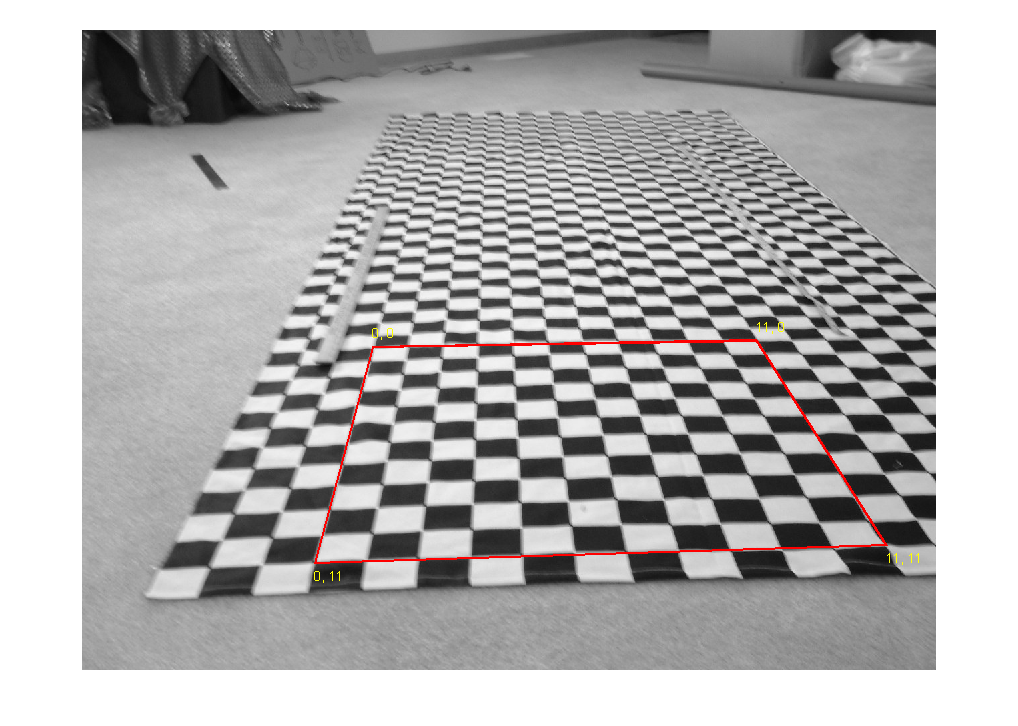
do image transform
[xf1, xf1_ref] = imwarp(img,tf);
imshow(xf1)
xf1_ref
imwrite(xf1,[name '_registered.jpg']);
xf1_ref =
imref2d with properties:
XWorldLimits: [-3.1012e+03 4.2918e+03]
YWorldLimits: [-7.5629e+03 1.1801e+03]
ImageSize: [8743 7393]
PixelExtentInWorldX: 1
PixelExtentInWorldY: 1
ImageExtentInWorldX: 7393
ImageExtentInWorldY: 8743
XIntrinsicLimits: [0.5000 7.3935e+03]
YIntrinsicLimits: [0.5000 8.7435e+03]
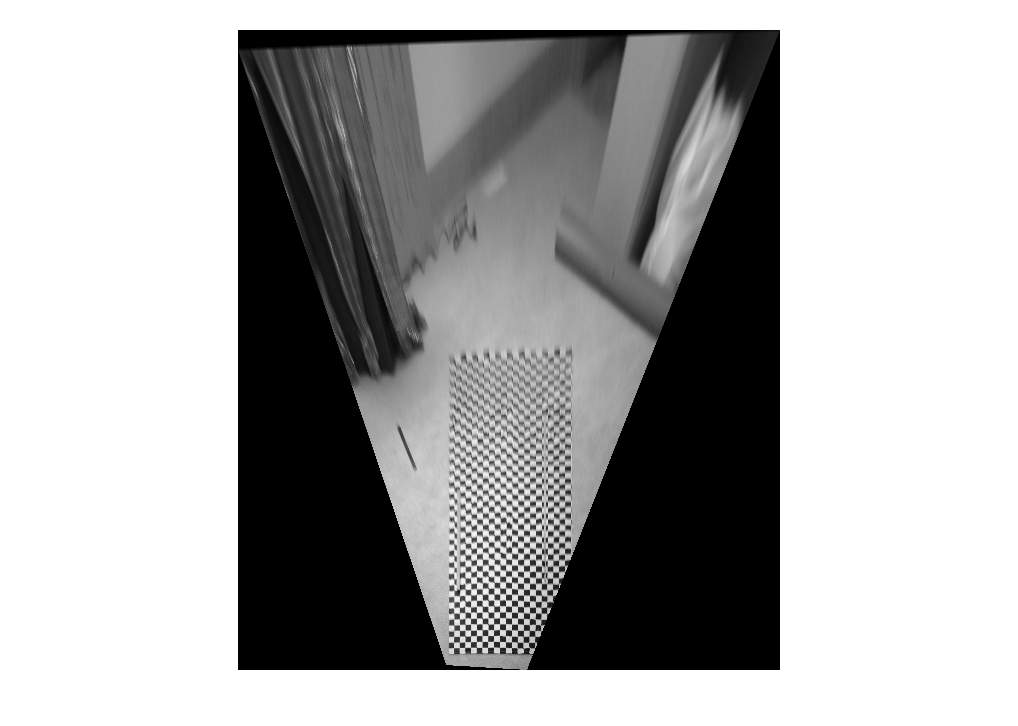
show a simplified form of the original image
bdi = [1 1; 1280 1; 1280 960; 1 960]; fill(bdi(:,1),bdi(:,2),'b'); axis ij; hold on fill(c,r,'r'); hold off axis equal
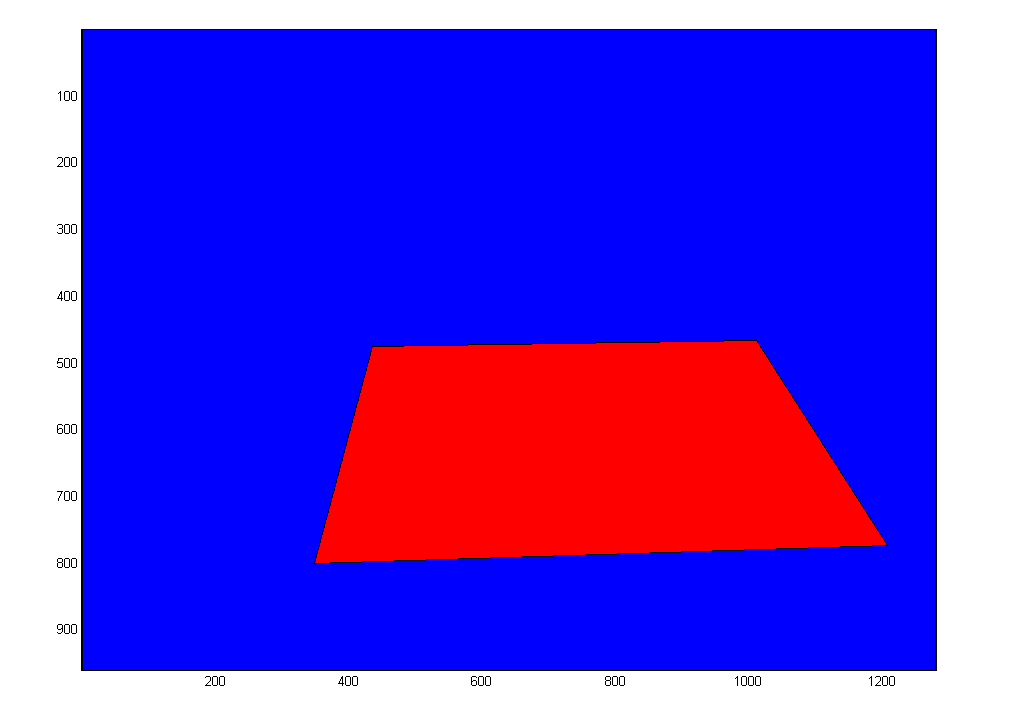
% show the transformed simplified image rd = transformPointsForward(tf,[c r]); bds = transformPointsForward(tf,bdi); fill(bds(:,1),bds(:,2),'b') axis ij hold on fill(rd(:,1),rd(:,2),'r') axis equal hold off
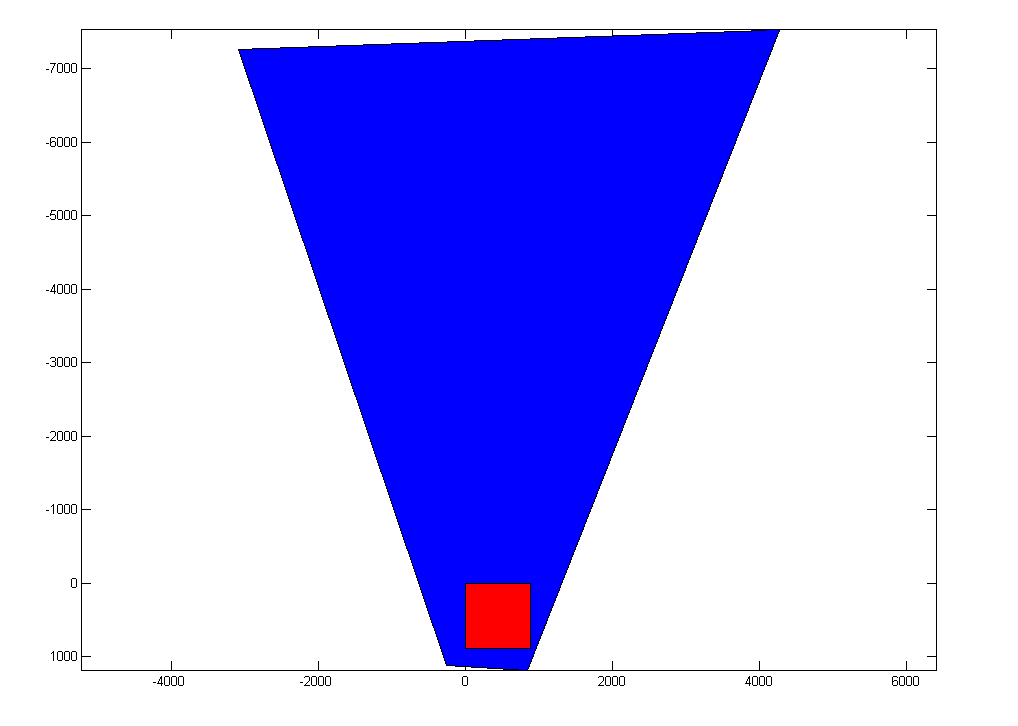
% show that the control points map to the target points prd = [c r ones(4,1)]*T; % B = repmat(A,M,N) creates a large matrix B consisting of an M-by-N % tiling of copies of A. % This is used to produce two copies of the the third, homogeneous % variable. The end result is to convert homogeneous to normal variables. uv = prd(:,1:2)./repmat(prd(:,3),1,2); disp('uv/80 = '); disp(uv/80)
uv/80 =
0 11.0000
11.0000 11.0000
11.0000 0.0000
0.0000 0.0000
truncate the resulting transformation. We used the previous plot to select the XData and YData limits.
xf1_ref.XWorldLimits = [-500 1500]; xf1_ref.YWorldLimits = [-800 1200]; xf1_ref.ImageSize = [2000 2000]; [xf2 xf2_ref] = imwarp(img,tf,'OutputView',xf1_ref); xf2_ref imshow(xf2) imwrite(xf2,[name '_truncated.jpg']); warning('on',msgid);
xf2_ref =
imref2d with properties:
XWorldLimits: [-500 1500]
YWorldLimits: [-800 1200]
ImageSize: [2000 2000]
PixelExtentInWorldX: 1
PixelExtentInWorldY: 1
ImageExtentInWorldX: 2000
ImageExtentInWorldY: 2000
XIntrinsicLimits: [0.5000 2.0005e+03]
YIntrinsicLimits: [0.5000 2.0005e+03]
